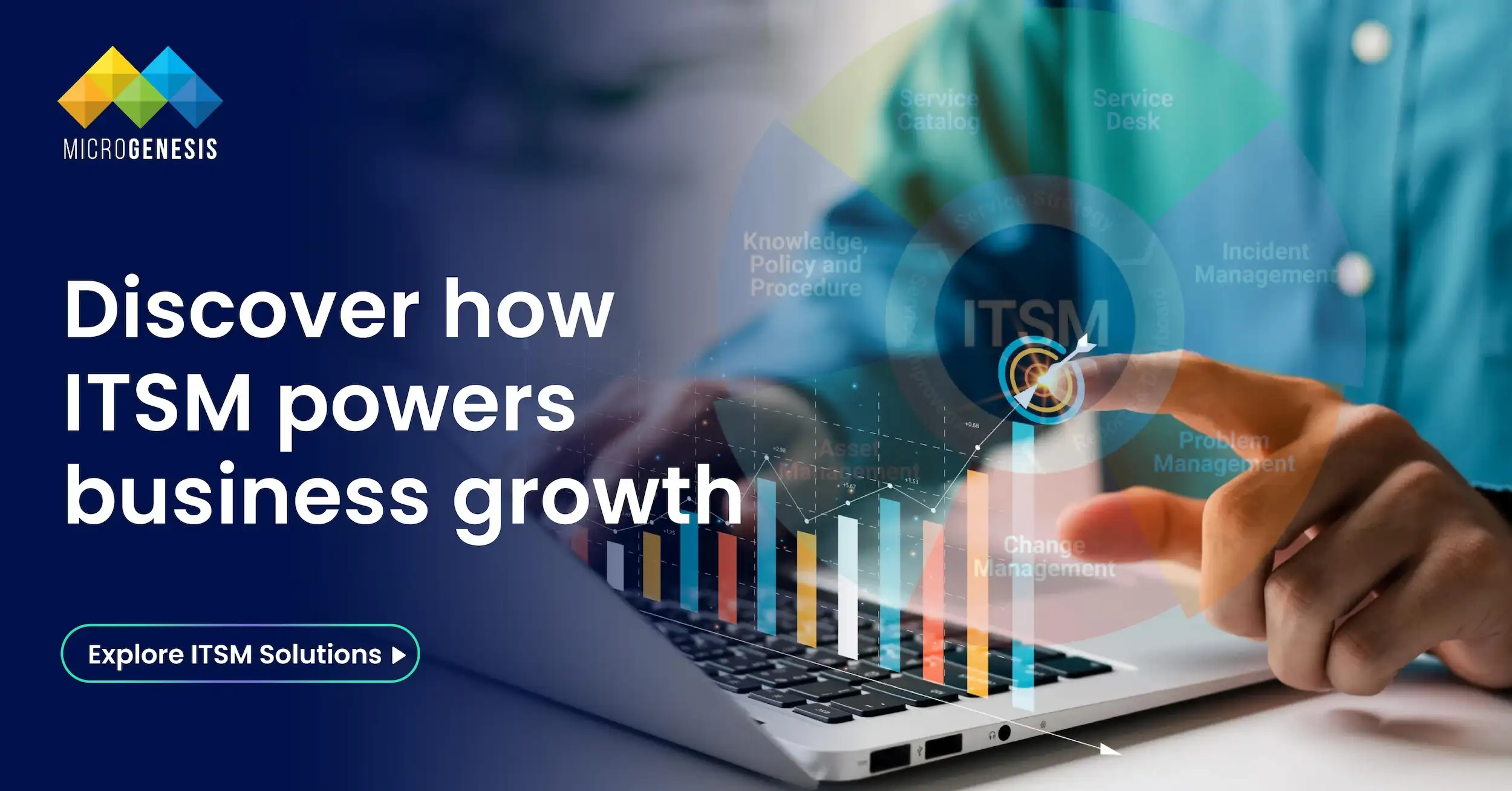In today’s fast-paced digital economy, technology underpins nearly every aspect of business operations. For growing businesses, maintaining efficient and reliable IT services is critical to ensuring seamless operations, customer satisfaction, and long-term success. However, as IT environments become more complex, so do the challenges in managing them effectively. This is where IT Service Management (ITSM) becomes a game-changer.
ITSM is more than just a support function; it is a strategic approach that reduces downtime, optimizes performance, and drives cost efficiency. In this article, we will explore how ITSM can significantly reduce downtime and save costs for growing businesses.
What is IT Service Management (ITSM)?
ITSM refers to the comprehensive set of policies, processes, and tools that organizations use to design, deliver, manage, and improve IT services. It aligns IT services with business needs, ensuring that technology supports and enhances business objectives.
Engaging in professional ITSM consulting helps organizations assess their current IT maturity, identify process gaps, and implement best practices aligned with frameworks like ITIL. With expert guidance from consultants like MicroGenesis, businesses can streamline IT operations, enhance service delivery, and ensure long-term scalability and compliance.
Common ITSM frameworks include ITIL (Information Technology Infrastructure Library), COBIT, and ISO/IEC 20000. Among these, ITIL is the most widely adopted framework, providing best practices for IT service delivery and management.
The Hidden Costs of IT Downtime
Downtime can have a devastating impact on growing businesses. From lost productivity to diminished customer trust, the costs can quickly add up:
- Financial Losses: Revenue-generating systems being down can halt sales and transactions.
- Employee Productivity: Employees cannot perform their tasks efficiently without reliable IT systems.
- Customer Dissatisfaction: Unreliable services frustrate customers and may push them to competitors.
- Reputation Damage: Frequent outages or slow response times can harm your brand image.
- Regulatory Penalties: Some industries face compliance requirements, and downtime can lead to non-compliance.
A report by Gartner estimates that IT downtime costs organizations an average of $5,600 per minute, highlighting the critical need for efficient IT management.
How ITSM Reduces Downtime for Growing Businesses
- Proactive Monitoring and Incident Management
ITSM frameworks emphasize proactive monitoring and robust incident management processes. Through automated monitoring tools, potential issues are identified before they escalate into major outages. When incidents do occur, structured processes ensure quick resolution, minimizing disruption and maintaining service continuity.
Engaging with a trusted IT Service Management consulting partner like MicroGenesis ensures these frameworks are effectively tailored and implemented to suit your organization’s unique infrastructure. With expert consulting, businesses can strengthen their incident response strategies, optimize monitoring, and achieve higher IT service reliability.
- Change Management to Prevent Service Disruption
Uncontrolled changes are a major cause of downtime. ITSM enforces strict change management protocols to assess the impact of updates, patches, or infrastructure changes. By minimizing the risks associated with changes, businesses experience fewer disruptions.
- Problem Management for Root Cause Elimination
Beyond resolving immediate issues, ITSM focuses on identifying and eliminating root causes of recurring problems. This proactive approach prevents similar incidents from happening in the future, reducing overall downtime.
- Service Continuity and Disaster Recovery
ITSM frameworks incorporate service continuity planning and disaster recovery strategies. These plans ensure that critical systems can be restored quickly after unexpected outages, minimizing downtime and operational impact.
- Knowledge Management for Faster Resolutions
ITSM promotes building and maintaining a knowledge base of known issues and resolutions. This resource empowers IT teams to resolve problems more quickly, reducing downtime duration.
- Service Request Management
Efficient handling of service requests through automated workflows ensures employees receive timely IT support, preventing minor issues from escalating and impacting productivity.
Read More: Why You Need to Choose the Right ITSM Tool for Digital Era Success
How ITSM Saves Costs for Growing Businesses
- Optimized Resource Allocation
ITSM ensures resources are allocated efficiently based on business priorities. By reducing reactive firefighting and focusing on strategic service delivery, businesses avoid unnecessary expenses.
- Reduced Incident and Outage Frequency
Fewer outages mean reduced lost productivity, less need for expensive emergency fixes, and lower revenue losses.
- Improved Vendor Management
ITSM provides clear processes for managing third-party vendors and service providers. This ensures better service quality, negotiated costs, and accountability.
- Predictable IT Costs through Service Level Agreements (SLAs)
With SLAs in place, businesses have predictable IT service costs and clearer expectations, avoiding unforeseen expenses.
- Automation Reduces Manual Effort
Modern ITSM tools leverage automation for routine tasks, reducing labor costs and improving efficiency.
- Better Asset and License Management
ITSM processes track IT assets and software licenses, reducing wastage, ensuring compliance, and avoiding costly penalties.
- Reduced Training and Onboarding Costs
With standardized processes and knowledge management, training new employees becomes more efficient, lowering onboarding costs.
- Minimized Compliance Fines
ITSM frameworks often include compliance monitoring, reducing the risk of regulatory breaches and associated penalties.
Real-World Example: ITSM in Action
Consider a growing e-commerce business that struggled with frequent website outages and slow customer support responses. By implementing an ITSM solution based on ITIL best practices:
- They reduced unplanned downtime by 60% through proactive monitoring.
- Implemented change management reduced service disruptions during software updates.
- A knowledge base enabled faster resolution of common issues.
- Predictable IT service costs were established through vendor SLAs.
- Automation reduced support response times by 40%.
- Compliance requirements were met efficiently.
The result was increased customer satisfaction, higher revenue, reduced operational costs, and improved business resilience.
Choosing the Right ITSM Solution for Your Business
For growing businesses, selecting the right ITSM tools and frameworks is critical. Factors to consider include:
- Scalability to accommodate business growth.
- Integration capabilities with existing systems.
- Automation features to improve efficiency.
- User-friendly interface for quick adoption.
- Compliance with industry standards and regulations.
- Reporting and analytics for performance tracking.
Popular ITSM tools include ServiceNow, BMC Helix, Freshservice, ManageEngine ServiceDesk Plus, and Jira Service Management.
The Role of ITSM in Supporting Business Growth
Beyond reducing downtime and saving costs, ITSM plays a pivotal role in enabling scalable growth:
- Supports digital transformation initiatives.
- Improves employee satisfaction through reliable IT support.
- Enhances customer experience by ensuring service availability.
- Facilitates compliance as the business expands.
- Provides data-driven insights for better IT decision-making.
Conclusion
Downtime and inefficient IT operations can cripple a growing business. By adopting a robust IT Service Management (ITSM) approach—leveraging leading ITSM vendors like ServiceNow, Atlassian (Jira Service Management), and BMC—organizations can reduce downtime, save costs, and position themselves for scalable, reliable growth.
Partnering with a trusted IT solution company like MicroGenesis ensures expert guidance in selecting, customizing, and implementing the right ITSM tools tailored to your business needs. As an experienced ITSM implementation partner, MicroGenesis helps streamline operations, improve service delivery, and align IT with business goals.
Investing in ITSM is not merely a technical decision—it’s a strategic move that drives efficiency, customer satisfaction, and long-term profitability.
If your business is ready to take IT operations to the next level and minimize costly disruptions, exploring ITSM solutions with MicroGenesis is the first step toward a more resilient, cost-effective future.
Looking to reduce downtime and IT costs? Contact our ITSM experts today for a personalized consultation and discover how we can help your business thrive.



